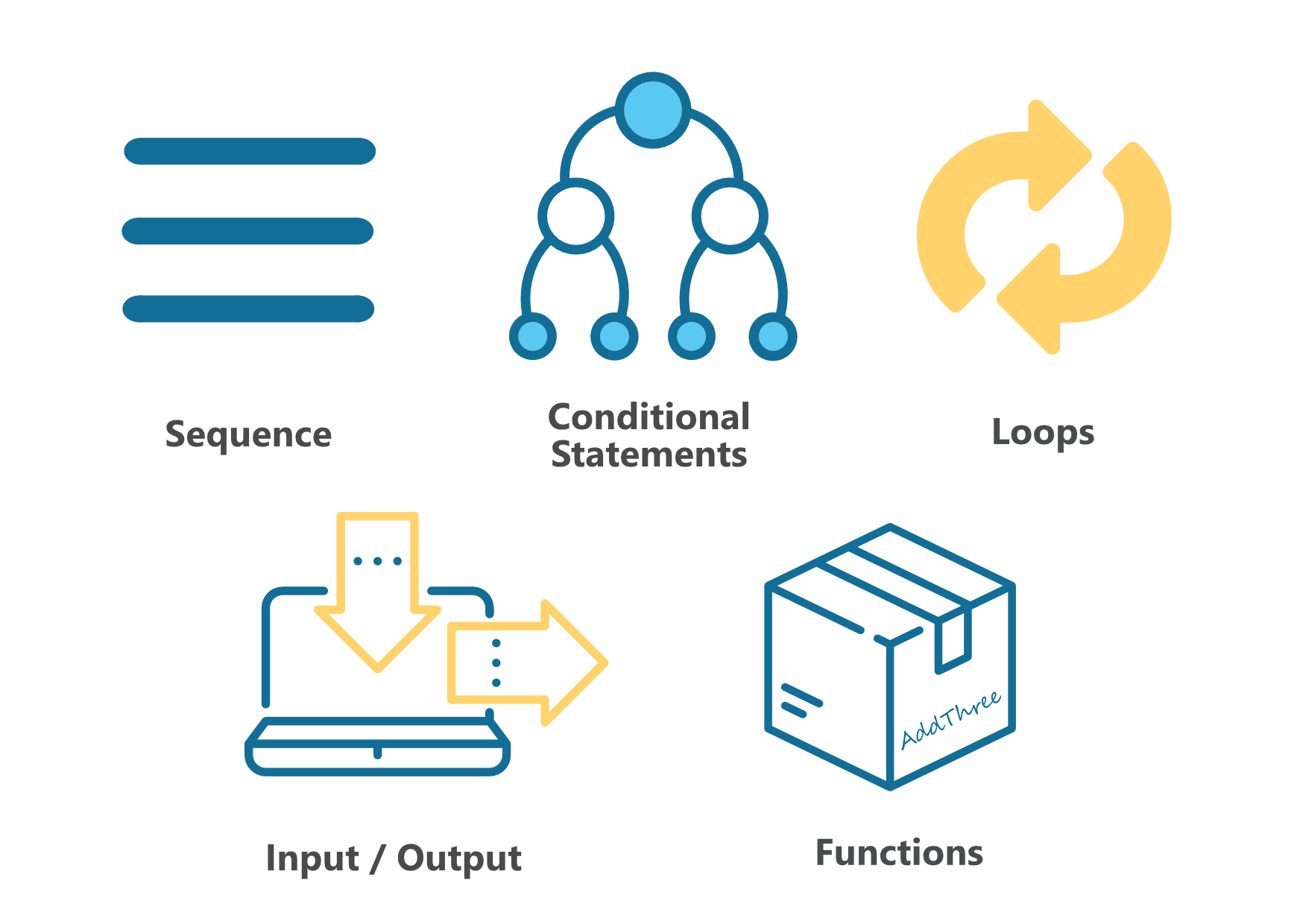Control Structures¶
The first program in Getting Started section consisted of sequential execution of tasks. However, the vast majority of times you will need a more complex structure for your code - whether it is control over which statements get executed or how many times they get executed. This is when control structures introduced in this section - such as loops or conditional statements - come in handy.

Conditional statements¶
First example of a use case of control structures arises when you only want to execute some part of your code, only if a certain condition is satisfied. For example, if you want to trigger an event only if a button is pressed.:
from microbit import *
import love
while True:
if button_a.is_pressed():
love.badaboom()
elif button_b.is_pressed():
display.show(Image.HAPPY)
else:
display.show(Image.GHOST)
sleep(100)
In case you want to execute a different task under several different conditions, you use elif (short for else if) statement. else statement comes in useful if you want to do something
in the rest of the case, where no condition is defined. The latter two statements are only usable if you had used an if statement before, but neither is mandatory.
Loops¶
Loops are a very useful structure in case you want to repeat the same section of code several times over.
There are two types of loops: for loops, that keep count of the number of times you do something and while loops which
perform an action until a condition you’ve specified is no longer happening.
For loops¶
There are times when you want to do an action a specific number of times, or you need to keep track of how many times it was performed. For example you’d like
to turn on the LEDs on the uppermost horizontal and rightmost vertical side. You can use a for loop to change which LED lights up like this:
from microbit import *
for i in range (5):
# set the pixel in column 0, row i to 9
display.set_pixel(0,i,9)
# set the pixel in column 4, row i to 9
display.set_pixel(4,i,9)
Here is another example. You could use a for loop to turn on all the LEDs in sequence, one at a time:
from microbit import *
display.clear()
for x in range(0, 5):
for y in range(0, 5):
display.set_pixel(x,y,9)
The for loop lets you execute a loop a specific number of times using a counter. The outer loop:
for x in range(0,5):
will execute the loop five times substituting x for consecutive values in the range 0 to 4 each time (in Python and most programming languages,
we always start counting from 0). The loop will stop before it reaches 5, the final value in the range.
The inner loop:
for y in range(0,5):
will execute the loop five times substituting y for consecutive values in the range 0 to 4 each time. Again, the loop will stop before it reaches the final value in the range.
While loops¶
One of the most common things you might want to do with a while loop is to do something forever, that is until the micro:bit
is turned off or reset. Maybe you have programmed your micro:bit with a game or perhaps it is collecting
temperature data. Here is an example of some code to repeat forever:
from microbit import *
while True:
display.scroll("Hello UCL)
This code will repeatedly display the message Hello UCL. You will likely have at least one while True: loop in your program
to keep the micro:bit going.
But what if you want to do an action only whilst something is happening? Perhaps you would like to display an image if the temperature on the micro:bit goes below a certain value so you’ll need to test the temperature:
from microbit import *
while temperature() < 18:
display.scroll(Image.SAD)
sleep(1000)
display.show(Image.HAPPY)